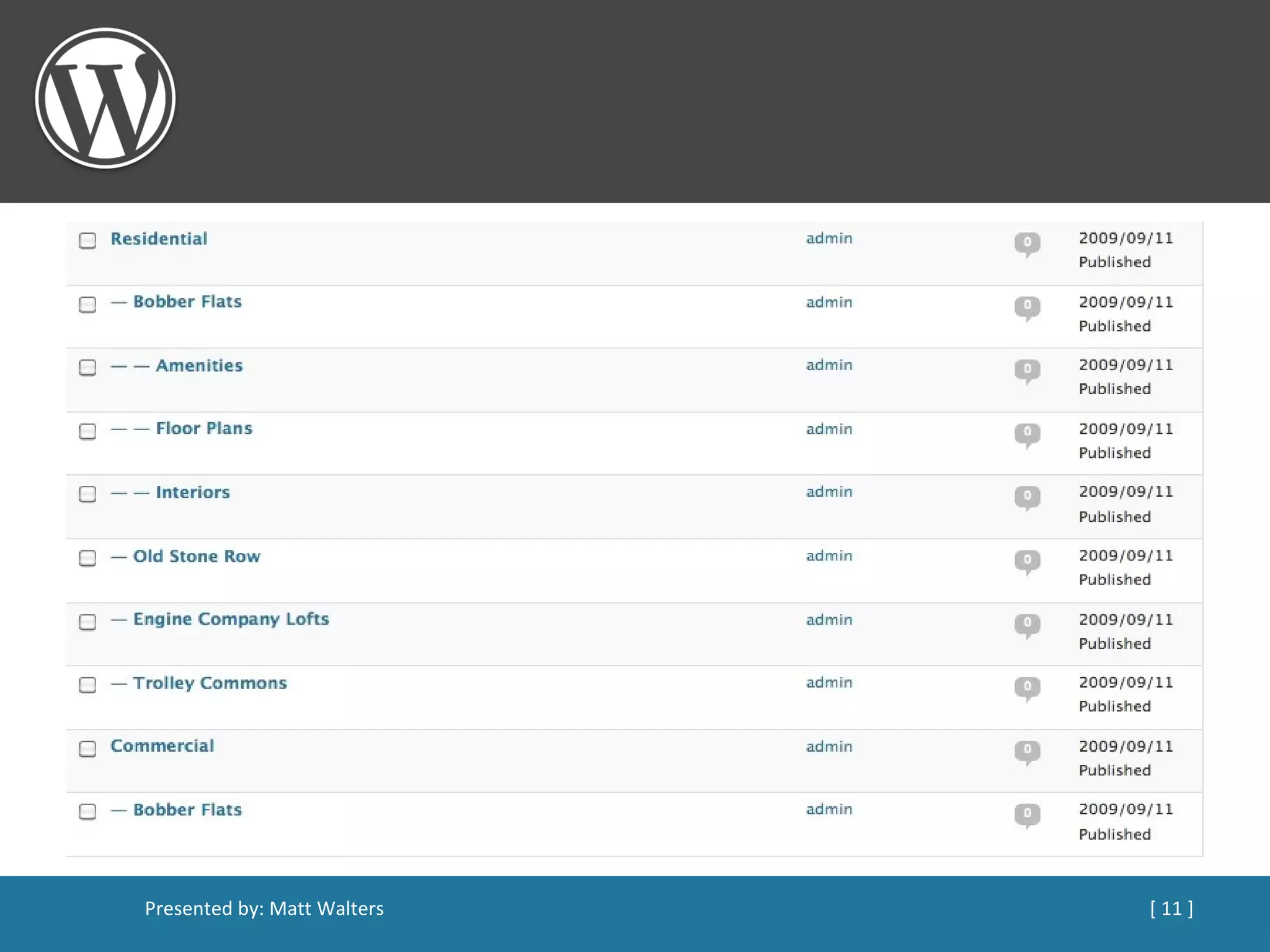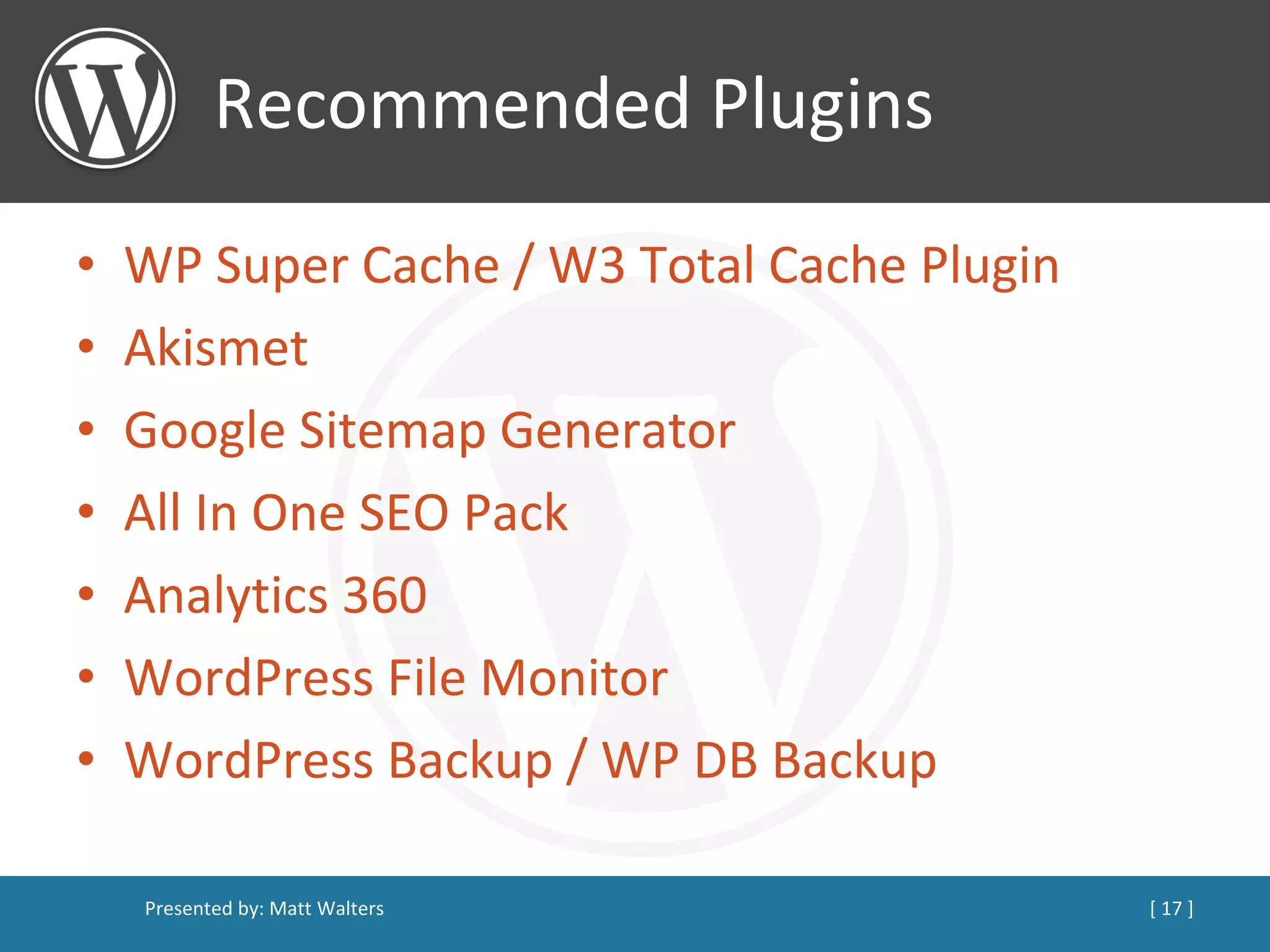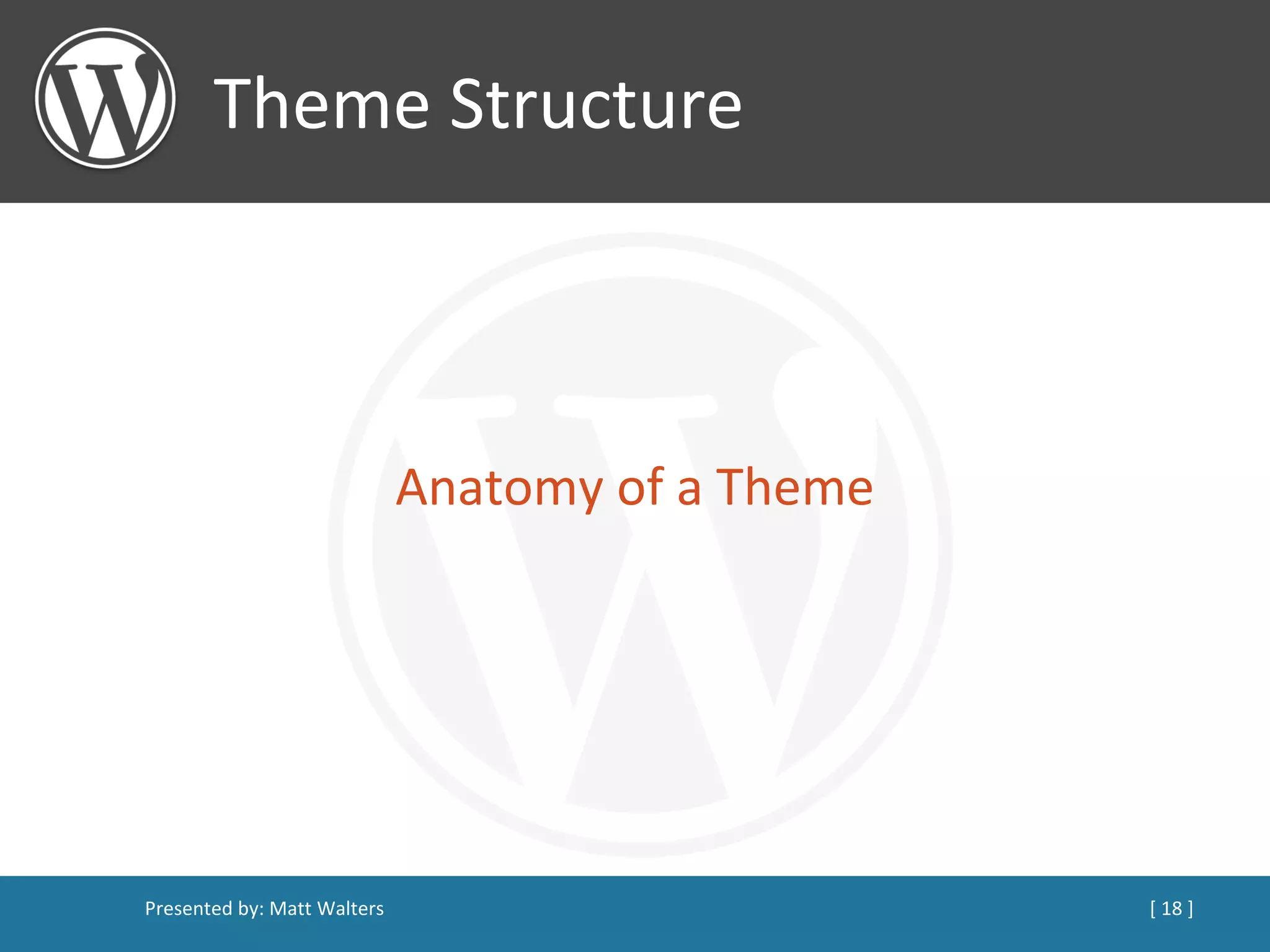WordPress can be used as a content management system (CMS) to build full websites beyond just blogging. As a CMS, WordPress allows you to create pages, posts, news articles and more. It includes features like themes, plugins, sidebars and custom fields to customize a site's design and content. Setup typically takes 1-2 hours while theme development may require 6+ hours for tasks like coding, testing and plugin integration. Key theme files and structures are outlined to help developers get started building WordPress themes.

![Contact Information http://mattwalters.net/ http://twitter.com/mwalters/ [email_address]](https://image.slidesharecdn.com/wpascms-2-090916114204-phpapp01/75/WordPress-as-a-CMS-v2-2-2048.jpg)
























![Data Storage Using Custom Fields get_post_meta($post_id, $key, [boolean]) $post_id = Primary key for Post/Page $key = "Name" for custom field [boolean] is optional True: Returns single string for $key False: Returns array witch values for each $key matched](https://image.slidesharecdn.com/wpascms-2-090916114204-phpapp01/75/WordPress-as-a-CMS-v2-27-2048.jpg)




![Theme Development Questions? http://mattwalters.net/ http://twitter.com/mwalters/ [email_address] (or funny jokes?)](https://image.slidesharecdn.com/wpascms-2-090916114204-phpapp01/75/WordPress-as-a-CMS-v2-32-2048.jpg)